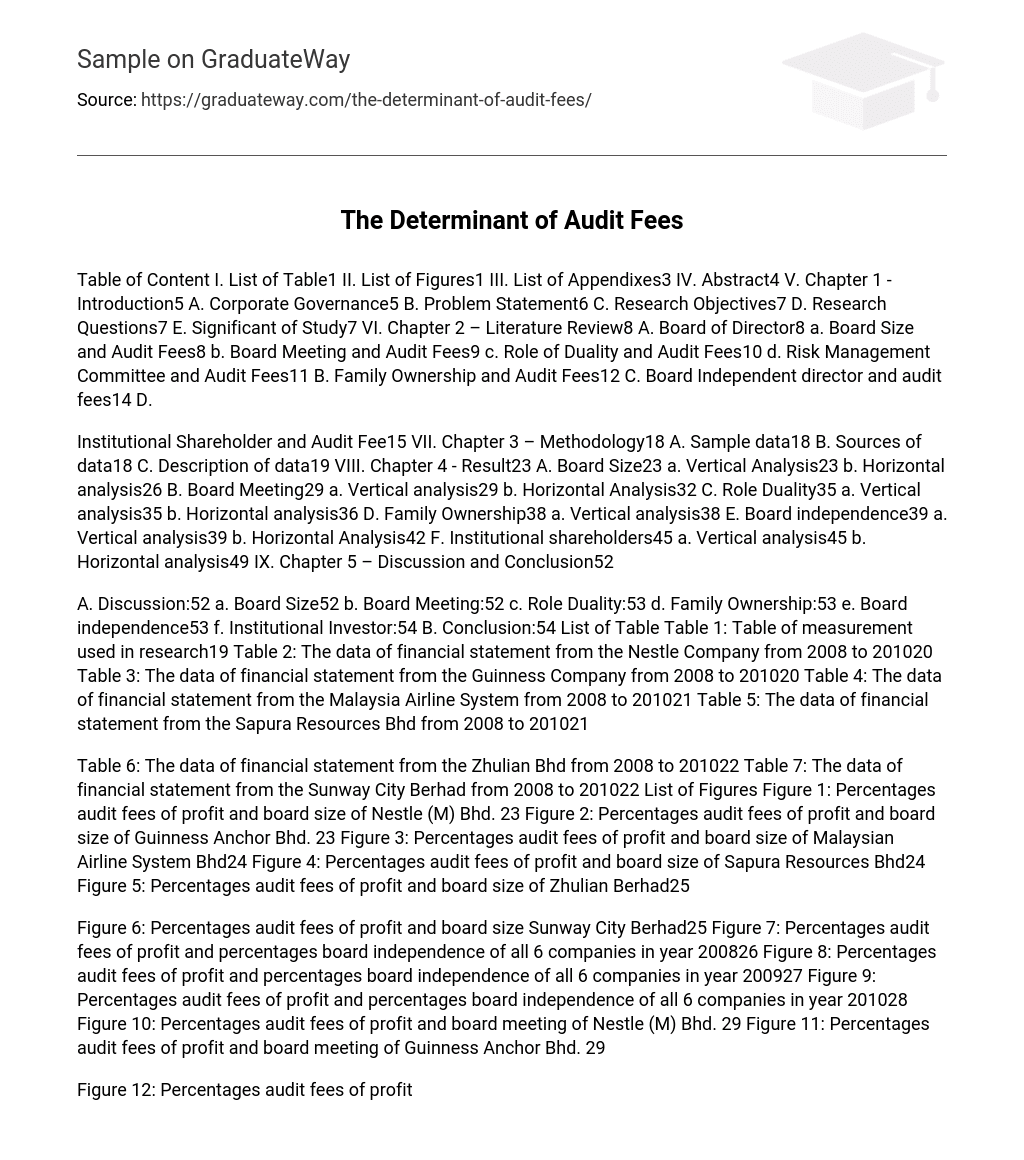Board Size After we did our vertical and horizontal analysis, we realized that there is a direct relationship between board size and audit fees. The range of the board size is from four to eleven members. This difference is due to the variety in business nature and structure. We test the relationship between board size and audit fees based on net profit.
The direct relationship shows that when board size increase, audit fees will increase also. This may due to board members imposed responsibilities on the audit tasks of the auditor. They may request the auditor to perform deeper auditing due to higher possibility of fraudulent activities. This leads to higher control risk thus, more audit procedures need to be carried out to reduce detection risks.
According to Lipton & Lorch (1992) and Jensen (1993), the smaller the board size of committee, cost cutting and downsizing can be achieved. The role of board committee is increasingly becomes more symbolic. The process of coordination between board members when decision is to be made become more task challenging as the board members have got diverse points of opinion, experience, skills, gender, and the ways of doing things. Board Meeting: Based on our finding in horizontal analysis, there is a positive relationship between board meeting and audit fees while in the vertical analysis there is no clear relationship.
Since our hypothesis state that there is a no clear relationship between board meeting and audit fees, our result finding in vertical analysis support with the hypothesis. When the number of board meeting increase, the audit fees tend to be high. This is because there is more frequent in checking the reliability if the financial statements by the board members. The inherent risk and control risk tend to be higher when board conducting more times of meeting. Thus, auditor needs to carry out more audit procedure to verify the correctness of the disclosure. As a result, audit fees increase and detection risk will decrease.
Role Duality: Based on our result finding in horizontal analysis, there is a positive relationship between role duality and audit fees. Our hypothesis showed that there are positive relationship between role duality and audit fees. Therefore, the result is in line with hypothesis made. When the director holds more than one position in the company, role duality circumstance occurs. Control risk will increase because agency problem arise and lead to conflict of interest. There is high possibility of the directors in making decision for their own best interest at the expense of the company interest.
Therefore, when the number of director involved in role duality increase, audit fees will also increase due to more audit procedures need to be carried out. Family Ownership: Based on our vertical research finding, there is a positive relationship between family ownership and audit fees. When the percentage of family ownership increases, the audit fees tend to increase too. This is because high shareholding concentrated in the family will lead to collusion between family members in conducting business affairs illegally. For instance, this situation facilitates them to take profits of the company as private income.
This may sacrifice the interest of the other shareholders. Board independence Our research result indicates there is negative relationship between board independence and audit fees which is consistent with the hypothesis that we made. According to the Malaysian Code of Corporate Governance, a board must has at least 1/3 independent board members. All companies in our research fulfill this minimum requirement set by the regulatory authorities. This is because the likelihood of committing fraud can be reduced and less audit procedures need to be carried out when the percentage of independence directors increase.
The risk of misstating financial statements can be minimized, because independent directors will over view the disclosure of the financial information in the financial statements. Thus, it is reliable to be relied by the users of the financial statements to make respective decision. We test the relationship between percentage of independence directors and audit fees based on net profit. Institutional Investor: Based on our result finding, there is no clear relationship between institutional investors and audit fees in the vertical analysis.
This is because institutional investors do not have any related relationship with the audit fees. However, horizontal analysis indicates positive relationship between institutional investors and audit fees. This is because institutional investors will impose pressure in carry out high quality auditing process in term of our horizontal analysis. When the pressure imposed on the auditors increase, auditor need to carry out more substantive auditing procedures to detect the material misstatement in order to decrease the inherent risk while the control risk is high.
This way can ensure that their benefit of interest is not been threatened by the possibility of the occurrence of fraud incidence. Conclusion: We noticed that our result finding may not in the same direction with others research findings. This may due to the company samples chosen in the analysis. The different structures of corporate governance may affect the result. We cannot perform the population analysis due to the impossibilities in time and expenses involved. Thus, we choose the public listed companies randomly. From our analysis completed, there is no clear relationship between board meeting and audit fees.
There is negative relationship existed between board independence, family ownership and audit fees. On the other hand, board size and role duality has a positive relationship with the audit fees. In term of the institutional investors, our vertical analysis indicates has a not clear relationship while horizontal analysis indicates positive relationship.





